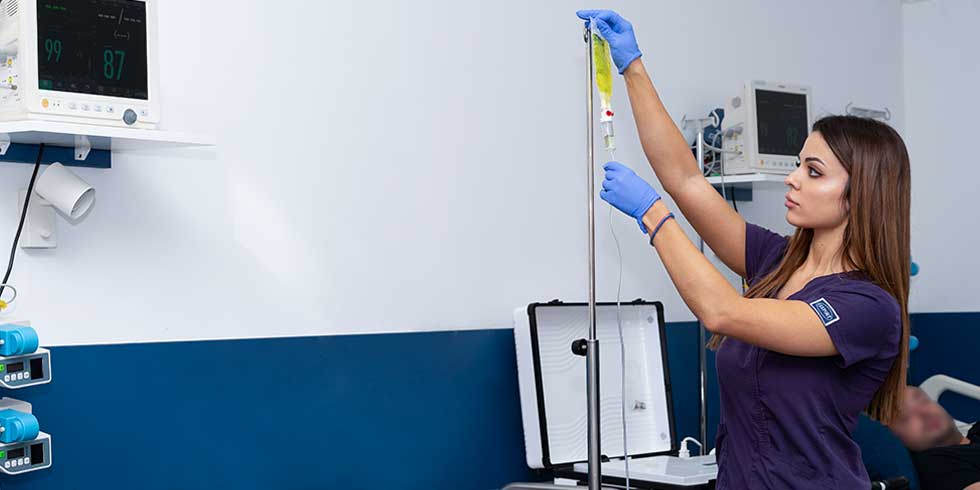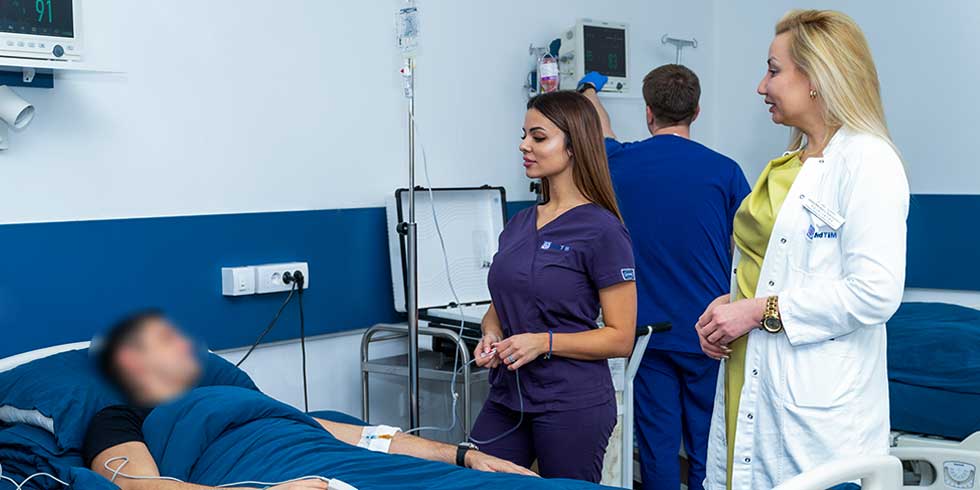Possibility of cost reimbursement through health insurance
Detoxification is a medical procedure that represents the first and essential step in the treatment of addiction. Regardless of whether the addiction is to alcohol, drugs or medication, the body of a person suffering from this illness is burdened with toxic substances that directly affect their physical and mental condition.
As a procedure, detoxification has two main goals: to remove accumulated toxins from the body and to alleviate the symptoms of withdrawal, which occur when psychoactive substances are discontinued. This phase is crucial, as without physical recovery, a person is unable to engage in psychotherapy and long-term healing.
It is important to distinguish between physical and psychological addiction. Physical dependence refers to a state in which the body can no longer function without a certain substance — and sudden cessation causes painful and potentially dangerous symptoms. Psychological addiction, on the other hand, involves an emotional and mental need for the substance, often developing in response to stress, trauma or habit.
This is why detoxification is the first and necessary procedure — it cleanses the body and provides the foundation for further work on the emotional and psychological levels.
In cases where a person uses multiple different substances, the detoxification procedure must be carefully planned and carried out with a multidisciplinary approach to avoid interactions and additional risks.
Regardless of the type of addiction, detoxification is an essential procedure that enables a safe start to recovery and prevents the serious consequences of sudden substance withdrawal.

The detoxification procedure is carried out in clearly defined stages, ensuring patient safety and the effective removal of psychoactive substances from the body. The goal is not only physical cleansing but also stabilisation of vital functions, enabling the individual to progress to the next phase of treatment – psychotherapy and rehabilitation.
There are various methods of detoxification, chosen based on the type of substance, severity of addiction, the patient’s overall health, and urgency of intervention. Each method has its advantages and limitations, but the common goal is safe removal of toxins from the body and patient stabilization. It is important to stress that all these methods are medical procedures conducted under controlled conditions.
Ultra-rapid detoxification is an intensive medical procedure conducted under continuous supervision by a medical team. During the procedure, the patient is kept in a controlled and protected environment while opiates are rapidly eliminated from the body using specialised medications.
Simultaneously, withdrawal symptoms are medically managed to ensure maximum safety and comfort.
Advantage: the patient avoids experiencing the intense withdrawal symptoms typically associated with detox, as the procedure is designed to shield them from the physical and emotional stresses of abstinence.
Limitations: this procedure is only suitable for patients without serious chronic illnesses and who have undergone a comprehensive diagnostic evaluation.
Note: The choice of detoxification method is determined individually by the medical team, based on the patient’s health status and expert risk assessment.

Each type of addiction has its own specifics in terms of the substance involved, its effects on the body, and the course of the withdrawal crisis. Therefore, the detoxification procedure varies depending on the type of dependency. While the approach is always individualised, there are general protocols that apply according to the type of psychoactive substance.
Alcohol addiction is not merely a psychological issue – it directly impairs the functioning of the liver, nervous system, heart, and endocrine balance. The liver, which plays a crucial role in detoxifying the body, is often already damaged in chronic alcoholics, which further complicates the process. Therefore, alcohol detoxification must be treated as an urgent medical procedure requiring a professional approach and continuous supervision by a medical team.
In most cases, physical detoxification from alcohol lasts between five and seven days, depending on:
Due to these risks, alcohol detoxification must be conducted exclusively in hospital settings, under 24-hour supervision by qualified medical staff. Any attempt at unsupervised withdrawal from alcohol can result in severe complications or even a fatal outcome.
Narcotic addiction is one of the most challenging forms of addiction, as it rapidly impairs both the physical and mental health of an individual. Each psychoactive substance has a specific mechanism of action on the body, which is why the medical detoxification procedure must be tailored to the particular substance and the patient’s situation.
Heroin, morphine, buprenorphine, methadone – all of these opiates cause a very strong physical dependence. Upon cessation, a severe withdrawal crisis occurs, with symptoms including:
In such cases, substitution therapy is often employed – for example, with methadone or buprenorphine – to gradually stabilise the body. However, this therapy must be carefully controlled, as it carries the risk of developing a new addiction. An alternative approach involves rapid and ultra-rapid methods that accelerate the elimination of opiates and shorten the duration of physical dependence.
These substances are predominantly psychologically addictive, but their abuse has profound effects on the nervous system. Symptoms of withdrawal include:
On average, drug detoxification lasts between 7 and 10 days; however, depending on the type of drug, length of abuse, and the patient’s overall health, this period may be extended. Treatment is multidisciplinary and includes:
Drug addiction is often unique in that it frequently begins legally—through prescribed medication by a doctor. However, when medicines are used for longer than recommended, in higher doses, or for improper purposes, serious physical and psychological dependence can develop. Detoxification from drugs is the first and most important step towards freedom from this silent yet very serious illness.
Drug addiction, especially to benzodiazepines, often causes the most complex and dangerous withdrawal syndromes, including:
Because of these symptoms, drug detoxification must be carried out exclusively in controlled hospital settings, with constant medical supervision and immediate availability for intervention.
Drug detoxification usually lasts between 3 and 7 days, but in some cases it may take longer — especially in cases of long-term abuse or poly-substance use. The treatment plan is always personalised, taking into account:
Detoxification is a complex medical procedure that, although it may sound straightforward in theory, can carry serious risks to the patient’s health and life in practice. For this reason, detoxification at home is strongly discouraged, especially without medical supervision.
In specialised institutions, detoxification is carried out:
Whether detoxifying from alcohol, medication, or drugs, attempting detox at home can be dangerous. That is why it is crucial to seek help from a professional facility with the experience, expertise, and resources to provide safe and effective care.

Following discharge from the clinic, the so-called post-acute recovery phase begins, typically lasting between 6 and 12 months. During this period, the patient returns to everyday life, but with:
Addiction to psychoactive substances, regardless of its form, undermines physical and mental health, emotional stability, and personal relationships. The good news is that addiction is treatable – but the first and most crucial step is detoxification. This medical procedure involves far more than simply cleansing the body; it is about regaining control over one’s own body, emotions, and decisions.
Detoxification is the foundation – not the goal. It lays the groundwork for true transformation: psychological renewal and a redefinition of one’s life path. With the professional support of doctors, therapists and loved ones, long-term abstinence is achievable and a fulfilling, addiction-free life can be rebuilt.
If you or someone close to you recognises the signs of addiction, don’t wait for the crisis to become unbearable. Acting in time can save a life.
Contact us today. Our team will guide you through the next steps, explain the procedure, and offer the reassurance that you are not alone.
Detox is not the end – it’s the beginning of freedom.